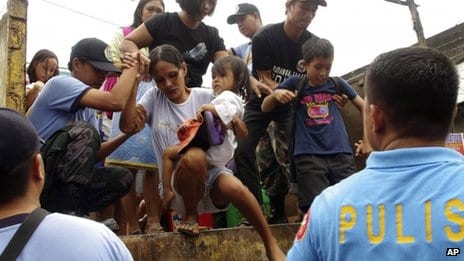Oxfam is poised to respond following Typhoon Haiyan. Felipe Ramiro, acting country director of Oxfam in the Philippines, said: “Initial reports from the ground indicate that the provinces of Samar and Leyte in the Visayas region are the hardest hit. Electricity in these areas has been cut off and communication has been difficult. Flights to these provinces and other areas have also been cancelled.”
Oxfam is poised to respond following Typhoon Haiyan
Felipe Ramiro, acting country director of Oxfam in the Philippines, said: “Initial reports from the ground indicate that the provinces of Samar and Leyte in the Visayas region are the hardest hit. Electricity in these areas has been cut off and communication has been difficult. Flights to these provinces and other areas have also been cancelled.”
 “As of early afternoon today, around 42,000 families or 210,000 individuals have been affected and are staying in 562 evacuation centres in 22 provinces, according to the National Disaster Risk Reduction and Management Council (NDRRMC).”
“As of early afternoon today, around 42,000 families or 210,000 individuals have been affected and are staying in 562 evacuation centres in 22 provinces, according to the National Disaster Risk Reduction and Management Council (NDRRMC).”“Oxfam’s assessment teams will be dispatched to assess the situation of these areas. Oxfam is ready to respond to the emergency should the government need it.”
Ramiro adds: “We hope to know more in the coming hours. The Oxfam teams will be dispatched starting tomorrow, especially to areas which are at risk from hazards like flooding and storm surges and may not be able to bounce back from disaster quickly because of poverty.”
In a report in the Philippine Daily Inquirer on 8 November, Haiyan packed maximum sustained winds of 314 kilometres per hour, with gusts up to 379 kilometres per hour, according to the US Navy’s Joint Typhoon Warning Centre in Hawaii. Local weather bureau, Philippine Atmospheric, Astronomical and Geophysical Services (PAGASA), meanwhile, reported a smaller reading at 234 kph with gusts of up to 275 kph. Haiyan is the strongest typhoon to hit the Philippines this year.



